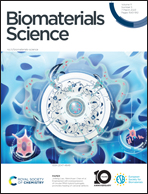Engineered cell-overexpression of circular RNA hybrid hydrogels promotes healing of calvarial defects
Abstract
Craniomaxillofacial bone defects seriously affect the physical and mental health of patients. Bone marrow mesenchymal stem cells (BMSCs) are “gold standard” cells used for bone repair. However, the collection of BMSCs is invasive, and the osteogenic capacity is limited with age. Human umbilical cord mesenchymal stem cells (hUCMSCs) are promising alternative seed cells for bone tissue engineering. Our group previously used high-throughput sequencing technology and bioinformatics methods to detect circ-CTTN (hsa-circ_0003376) molecules, which may play an essential role in the osteogenic differentiation of hUCMSCs. In this study, osteogenic induction in vitro showed that the overexpressing circ-CTTN (OE group) exhibits a more pronounced osteogenic phenotype. The levels of osteogenesis-related genes in the OE group were highly expressed. The gelatin–methacrylate (GelMA) hydrogel possessed excellent biocompatibility and was used to load hUCMSCs. In the rat calvarial defect, the OE group presented a larger bone healing volume and denser bone trabecular distribution than other groups. So far, the overexpression of circ-CTTN could enhance the osteogenic differentiation of hUCMSCs and accelerate bone reconstruction. Our research could provide a new strategy and a strong theoretical basis for promoting hUCMSC clinical application in bone tissue engineering.



 Please wait while we load your content...
Please wait while we load your content...